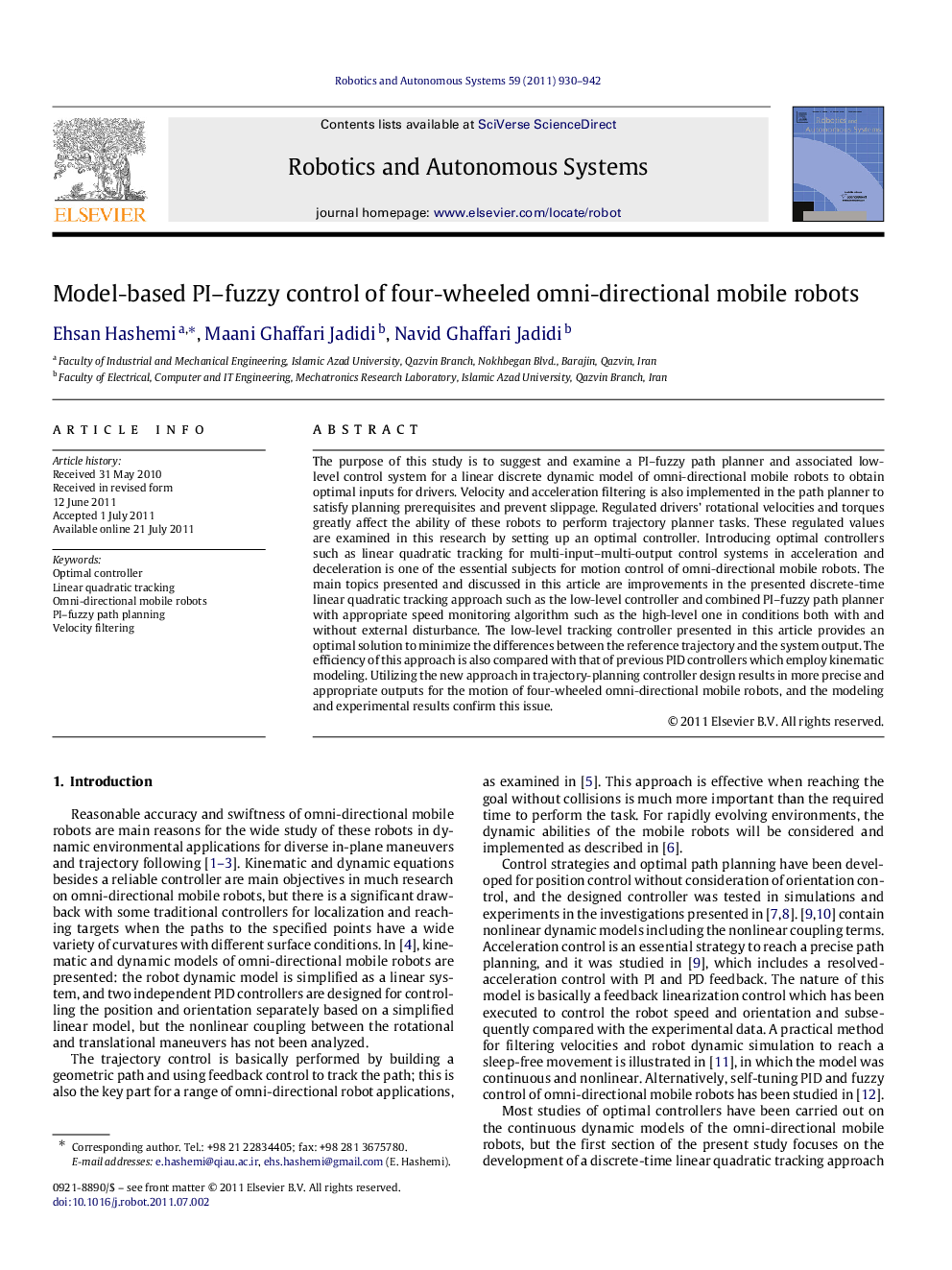| Article ID | Journal | Published Year | Pages | File Type |
|---|---|---|---|---|
| 413453 | Robotics and Autonomous Systems | 2011 | 13 Pages |
The purpose of this study is to suggest and examine a PI–fuzzy path planner and associated low-level control system for a linear discrete dynamic model of omni-directional mobile robots to obtain optimal inputs for drivers. Velocity and acceleration filtering is also implemented in the path planner to satisfy planning prerequisites and prevent slippage. Regulated drivers’ rotational velocities and torques greatly affect the ability of these robots to perform trajectory planner tasks. These regulated values are examined in this research by setting up an optimal controller. Introducing optimal controllers such as linear quadratic tracking for multi-input–multi-output control systems in acceleration and deceleration is one of the essential subjects for motion control of omni-directional mobile robots. The main topics presented and discussed in this article are improvements in the presented discrete-time linear quadratic tracking approach such as the low-level controller and combined PI–fuzzy path planner with appropriate speed monitoring algorithm such as the high-level one in conditions both with and without external disturbance. The low-level tracking controller presented in this article provides an optimal solution to minimize the differences between the reference trajectory and the system output. The efficiency of this approach is also compared with that of previous PID controllers which employ kinematic modeling. Utilizing the new approach in trajectory-planning controller design results in more precise and appropriate outputs for the motion of four-wheeled omni-directional mobile robots, and the modeling and experimental results confirm this issue.
► Discrete-time LQT method such as the low-level controller is studied in this article. ► PI-fuzzy path planner with speed filtering is examined here as the high-level controller. ► An integrator on the error vector to lessen effects of disturbances is utilized in LQT. ► Increased fuzzy interference zones suggest more stable and smooth movement. ► PI-LQT controller deviations are around the sharp edges compared with the PI–Fuzzy–LQT.
